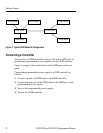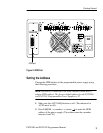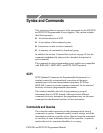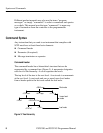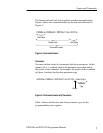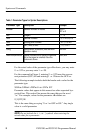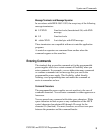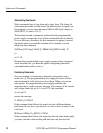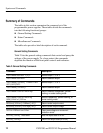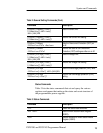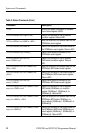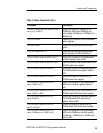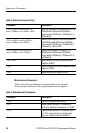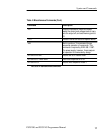
Syntax and Commands
10
PS2520G and PS2521G Programmer Manual
Abbreviating Commands
Most commands have a long form and a short form. The listing for
each command in this section shows the abbreviations in upper case.
For example, you can enter the query SOURce:VOLTage? simply as
SOUR:VOLT? (or sour:volt?).
The brackets around a mnemonic indicate that the programmable
power supply assumes this level of the command header by default.
It is not necessary, therefore, for this mnemonic to appear as part of
the header when you send the command. For example, you can
abbreviate the command
[SOURce:]VOLTage[:LEVel][:IMMediate][AMPLitude] 10
to
volt 10
Because the programmable power supply assumes that a command
starts from the root, you have the option of beginning the initial
command header with a colon (:).
Combining Commands
You can combine (concatenate) commands and queries using a
semicolon (;). The programmable power supply executes concate-
nated commands in the order it receives them. When you concate-
nate queries, the programmable power supply combines the
responses into a single response message. For example, if the current
and voltage limits are set to 1 A and 20 V, the command
curr?;volt?
returns the message
0.100E+1;0.200E+2
If the command that follows the semicolon has a different header
path from the root level, you must use a colon to force a return to the
root level:
MEASure:CURRent?;:OUTPut:STATe?
If the command that follows the semicolon has the same header path,
you may omit the colon and the path and state only the new leaf



